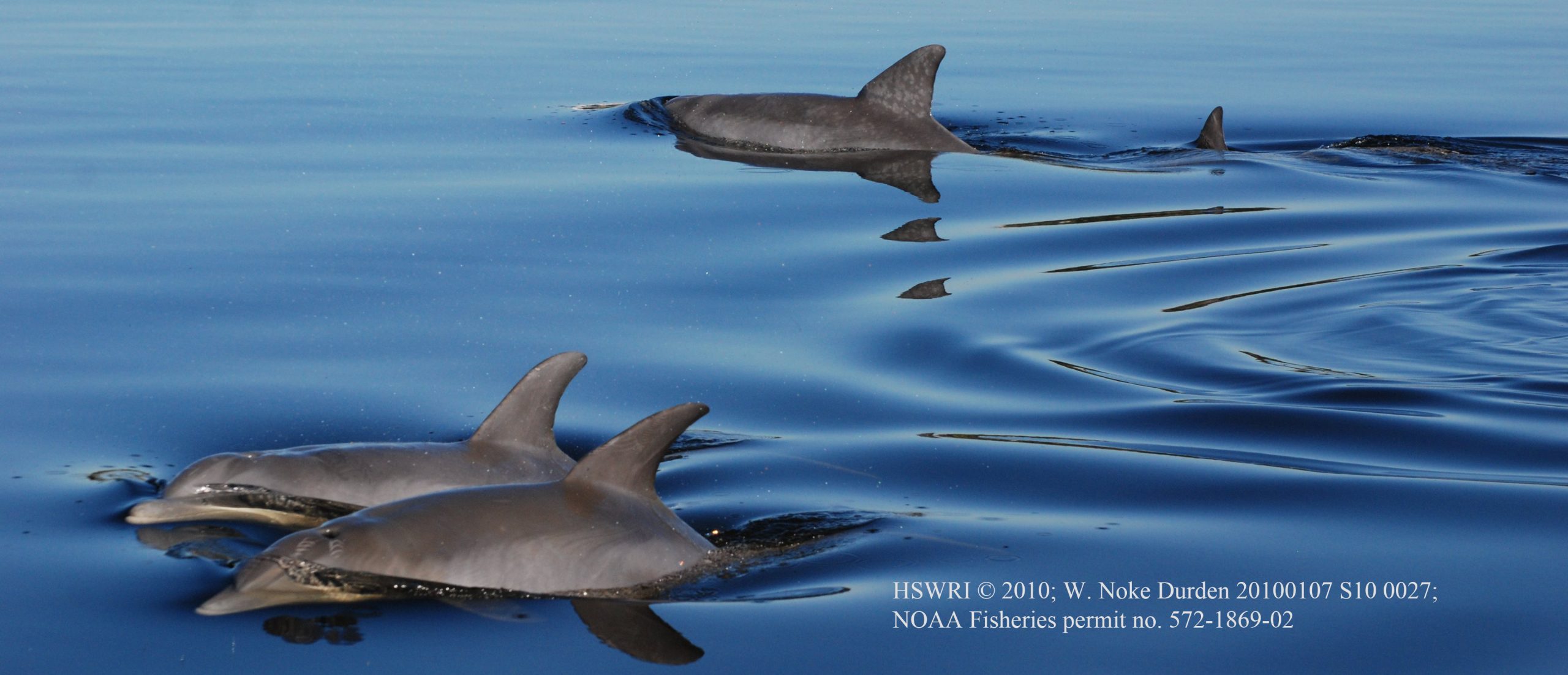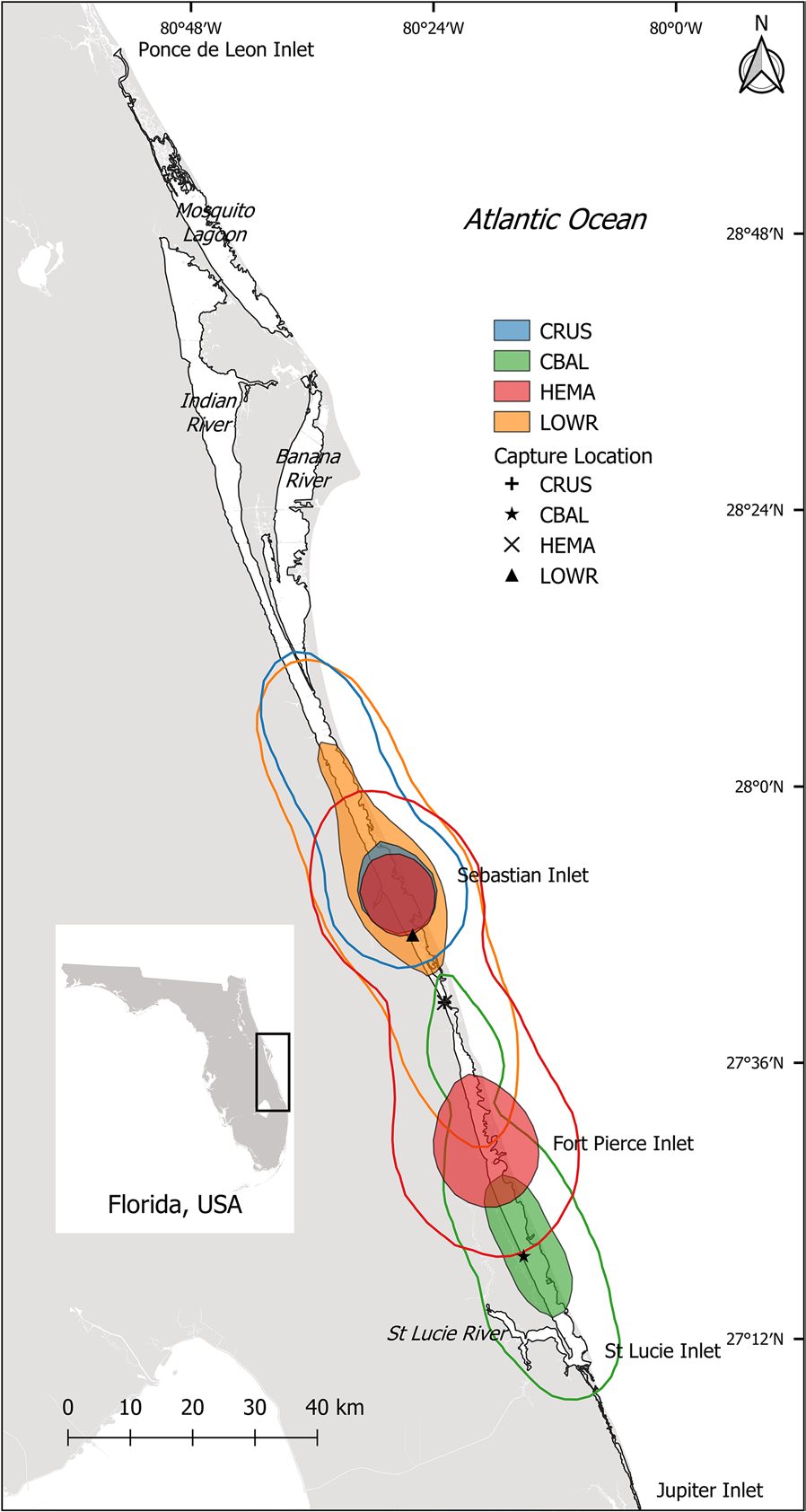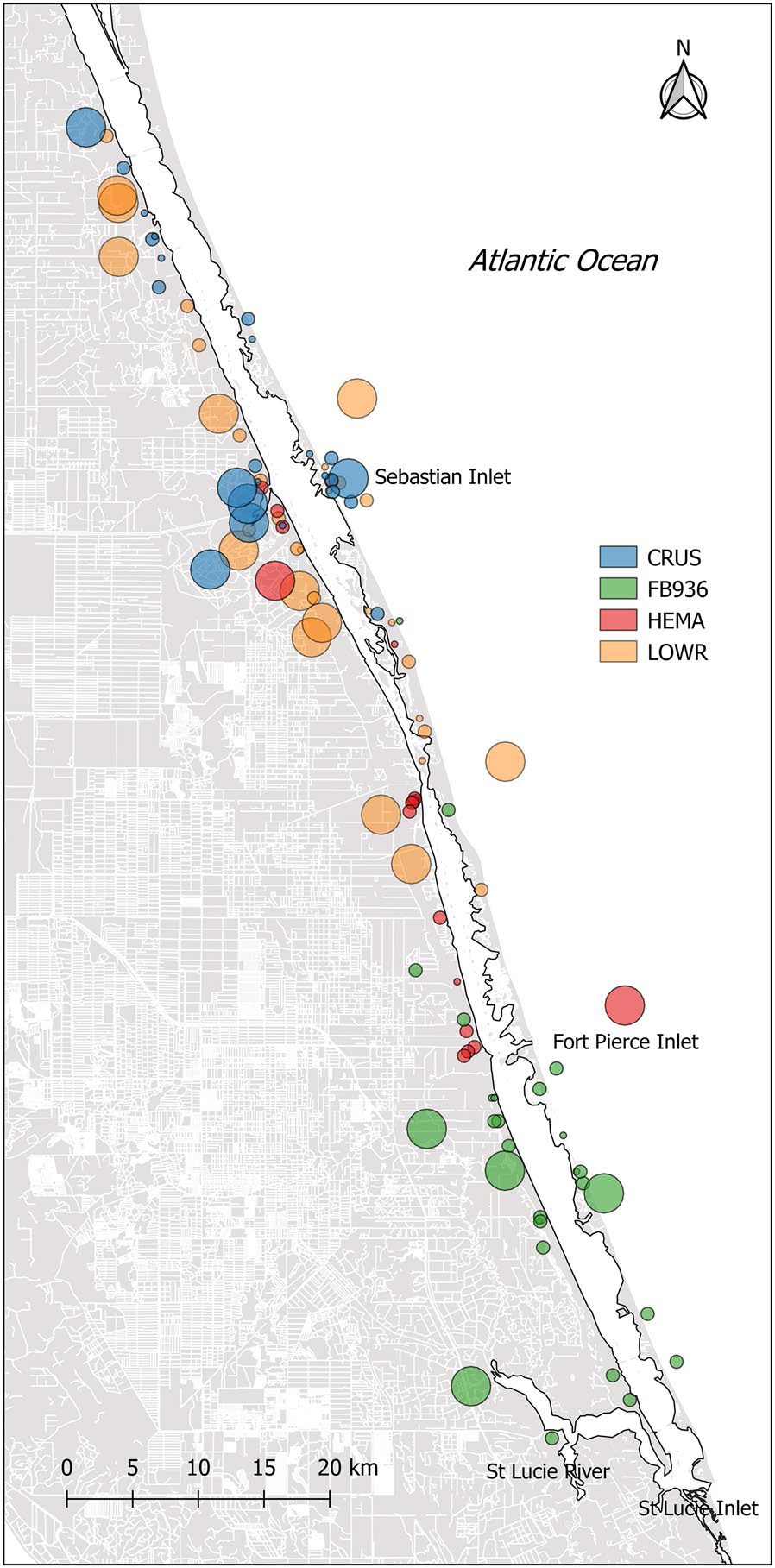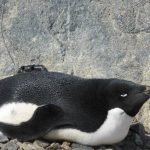← Back
Tracking bottlenose dolphins by night in narrow channels

Dolphins do have a nightlife, but visual observation techniques cannot fully capture this. Also, coastal populations of dolphins sometimes occupy complex, labyrinthine habitats. Here too line-of-sight techniques fall short. Satellite telemetry doesn’t distinguish between night and day, and, as we will see, can track animals through an aquatic maze. This is enabling scientists to better understand the nocturnal behavior of bottlenose dolphins.
The bottlenose dolphin (Tursiops truncatus) is perhaps the most coastal of the cetacean species. A number of their populations and communities occupy areas close to human population centers, thus facing numerous anthropogenic threats such as pollution, injury (e.g., vessel strikes, net entanglement), or being ‘simply’ disturbed.
Studying nighttime behavior
They have been studied extensively across their range, but mostly about their diurnal habits. But what of their activities at night? Are they even active at night? A large part of bottlenose dolphin behavior is thus missing if we are to fully understand how they use their environment and the risks they face. And when studied at night, it was scarcely ever in convoluted places where they are difficult to track visually (photo or aerial survey), or where acoustic backscatter is difficult to interpret. Satellite telemetry such as Argos hasn’t got the same limitations, though, and can be used days and nights, even in extremely narrow serpentine habitats (~ 1 km wide, as proved by this study).
More info about animal tracking with Argos
Four dolphins tracked in a shallow water lagoon
Four juvenile/adult male dolphins ranging in age from 6 to 21 years were tagged. Their activities have been tracked between 18:00 h and 6:00 h for about four to five months in the Indian River Lagoon on the east coast of Florida, USA. It is a shallow, estuarine system (82 % is less than 1-m deep!), characterized by a convoluted shoreline with many branching channels and the highest seagrass diversity of any US estuary until recently. It also has a high diversity of wildlife, including at least six communities of bottlenose dolphins living year-round in the lagoon.
Different individuals, different behaviors
The results of the Argos tracking show high individual variability in nocturnal behaviors, movement patterns and habitat selection, with some of the dolphins having preferential use of inlets, seagrass habitat, and specific water depths. Such differences may be influenced by social factors, by different strategies to avoid predators, and also by their individual response to human disturbance, in addition to foraging strategies. All four dolphins went outside of the main Indian River Lagoon system for long trips (more than 20 km), which was a surprise, either up rivers/creeks or out into the ocean.
Protecting bottlenose dolphins by night and by day
The analysis also reveals unknown threats to the Indian River Lagoon bottlenose dolphins. Trips into the ocean or use of inlets can get them in contact with other dolphin populations, thus possibly leading to disease transmission. Moreover, small waterways may have increased risk of exposure to pollution or low salinity. Furthermore, these waterways are often near human settlements, thus increasing the risk of disturbances.
This study highlights the importance of nocturnal data, with satellite telemetry providing information on dolphin movements and habitat use not otherwise readily available. Long-term studies of bottlenose dolphins in the region, and in other regions, could benefit from setting the tags to collect both diurnal and nocturnal datasets.
Reference & links
The research was conducted under National Marine Fisheries Service Scientific Research Permit Nos. 998-1678 and 14352.
- Elizabeth F. Hartel, Wendy Noke Durden and Greg O’Corry‑Crowe, 2020: Testing satellite telemetry within narrow ecosystems: nocturnal movements and habitat use of bottlenose dolphins within a convoluted estuarine system, Animal Biotelemetry, (2020) 8:13, https://doi.org/10.1186/s40317-020-00200-4
- Good Night? Satellite Data Uncovers Dolphins on the Move at Nighttime
Photo: a pod of bottlenose dolphins. Wendy Noke Durden, under research permit 998-1678 and 14352 from NOAA/NMFS



